Women in the Byzantine Empire › Battle of the Metaurus » Origins and History
Articles and Definitions › Contents
- Women in the Byzantine Empire › Antique Origins
- Battle of the Metaurus › Ancient History
Ancient civilizations › Historical places, and their characters
Women in the Byzantine Empire › Antique Origins
Ancient Civilizations
Women in the Byzantine Empire (4th to 15th century CE) were, amongst the upper classes, largely expected to supervise the family home and raise children while those who had to work for a living did so in most of the industries of the period, from manufacturing to hospitality. Although they were the minority, some women did manage to rise above the limitations imposed on them by the male-dominated culture and became hugely successful businesswomen, writers, philosophers and even empresses who ruled as regents or in their own right. Such figures include the empresses Theodora, Irene and Zoe, the biographer Anna Komnene, Hypatia the philosopher, and Kassia the poet.
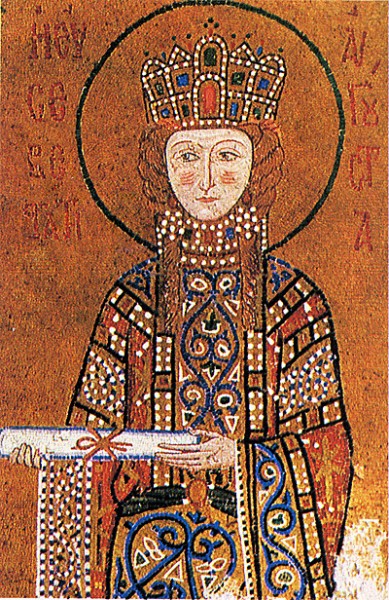
Byzantine Empress Irene
SOURCES
Unlike in many other medieval cultures, Byzantine history, as written by the people of the period themselves, almost exclusively focuses on the exaggerated deeds and misdemeanours of emperors along with a separate and equally problematic literature on saints and squabbles over religious doctrine. Social history is almost entirely neglected and what remains for modern historians to study is, unfortunately, woefully insufficient to comprehensively reconstruct such features of Byzantine history as class relations, family life and economics. As the historian C. Mango regretfully summarises:
There is little hope that this meagre and haphazard body of material will ever be increased, nor can we remedy the near absence of inscriptions on stone, which for classical antiquity provide such a rich source of information for society, institutions, and religion. (8)
Another difficulty, and a common one for ancient societies, is that sources are almost always written by men writing from their own perspectives and with their own prejudices. Still, we must make the best of what we have and it is possible to make many useful observations on the role of women in Byzantine society by piecing together indirect references, colourful biographies of famous women, sometimes the literary works of women themselves, depictions in art, and so on.
THE ROLE OF ARISTOCRATIC WOMEN
As in most ancient cultures, the women we know most about in Byzantium are those who belonged to the upper classes. One event which greatly affected the role of all women in Byzantine society, though, was the increasing prominence of Christianitythrough the centuries, as here summarised by the historian L. Garland:
…options for women evolved throughout the empire while still reflecting both the provisions of Roman law and longstanding customs. Christian values became more widely accepted and, with celibacy and virginity seen as an ideal lifestyle, women increasingly saw a life of chastity as an option. Many girls in the fourth and fifth centuries went into monastic institutions or, more usually, lived celibately at home, while the church instituted an “order” of virgins to support such girls as it did for widows. Marriage was, however, to remain the norm, and the majority of women in Byzantium were expected to concentrate on family duties as wives and mothers. (in Bagnall, 7117)
FOR MORE WELL-OFF BYZANTINE FAMILIES, THERE WAS EVEN A SEGREGATED PART OF THE HOME RESERVED ONLY FOR THE WOMEN OF THE HOUSEHOLD, THE GYNAIKONITIS.
To better ensure a girl remained a virgin until marriage, some attempt at segregating boys and girls was made with the latter expected to largely remain in the confines of the family home and only come into direct contact with males who were close members of the family. For more well-off families, there was even a segregated part of the home reserved only for the women of the household, the gynaikonitis, but this seems to have been a private space to keep men out rather than a restricted place from which women could not leave. In practice, it is clear that women could and did enter the wider world. Women spent time in public places: among others, shopping in the market squares, attending the public baths, visiting relatives, attending church (where they sat apart from the men), and participating in festivals.
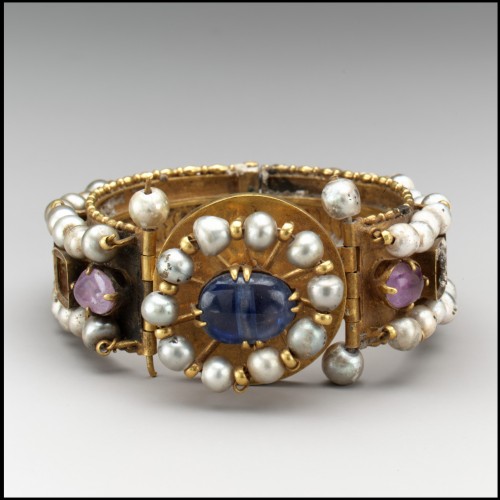
Byzantine Jeweled Bracelet
Aristocratic women in the Byzantine Empire, then, like in the earlier Western Roman Empire, were largely expected to marry, produce children and then look after them. Women also cared for the family home - specifically its property and servants. Girls, if they received education at all, were educated in the family home. They were taught spinning and weaving, and they studied the Bible and the lives of the saints. Reading was much more common than the skill of writing and, as the historian J. Herrin points out:
Studies of literacy based on later documents suggest that the ability to read, if not to write, was more widespread among women in Byzantium than in medieval Europe. (122)
The earliest a girl married was around the age of 12 (for boys it was 14). The involvement and consent of the parents was expected and, consequently, a betrothal was usually regarded as binding. Re-marriage was possible as long as a suitable period of mourning was observed by the widow but a third marriage was rare and only permitted under special circumstances which included being without children. Divorce was difficult to achieve, although if a wife committed adultery she could be put aside. Following the reforms of Constantine I (r. 306-337 CE), the only grounds for a woman to divorce her husband was if he was found guilty of murder or witchcraft. The laws of Justinian I (r. 527-565 CE) went even further and prohibited divorce altogether except if both parties consented to retire to a monastic life.
The role and influence of the women of the higher classes are here summarised by the historian A. Laiou:
Aristocratic women played an important role in politics and society. They were the medium through which alliances between aristocratic families were made and since they had property of their own, in the form of both dowry and patrimonial property, they had considerable economic power. Names, lineage, property, and family connections were transmitted along the female as well as the male line; and aristocratic women were as acutely conscious and proud of their lineage as their male relatives. (Shepard, 814)
WORKING WOMEN
Women who had to earn a living worked in the agricultural, retail, manufacturing (especially textiles and silk ) and hospitality industries. Some of the known jobs which could be performed by women included those of the weavers, bakers, cooks, innkeepers, washerwomen, midwives, medical practitioners, money-lenders and bath keepers. Many of these jobs and the knowledge connected to them would have been passed down from generation to generation. Some of the more unusual female professions were sorcerers and matchmakers. There was nothing to prevent women from owning their own businesses such as inns and shops.
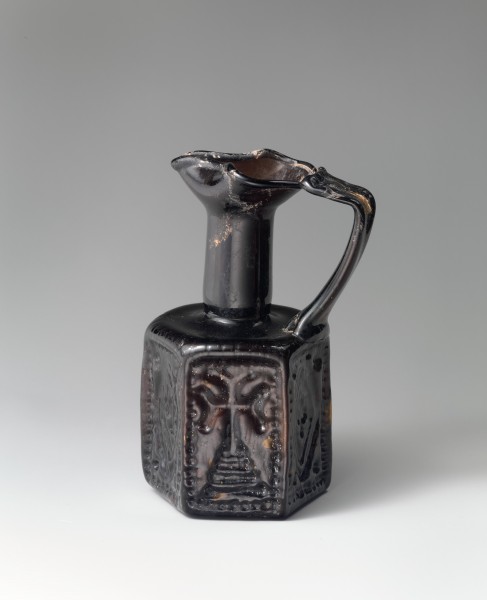
Byzantine Hexagonal Jug
The lowest class of women were the prostitutes and actresses, who were considered to be pretty much the same thing in Byzantine society, at least in the eyes of the upper classes. Brothels were present, especially in the busy ports of the empire such as the capital and Ephesus. Actresses were usually expected to deliver pornographic singing and dancing routines in theatres or public arenas like the Hippodrome of Constantinople - hence their dubious reputation.
A TARGET FOR MOTHERS WAS TO SEND THEIR DAUGHTERS TO THE BYZANTINE IMPERIAL COURT WHERE THEY MIGHT GAIN EMPLOYMENT AS LADIES-IN-WAITING.
There was likely very little movement between classes in Byzantine society but there was one quick route that could be taken from the very bottom to the very top of the social ladder. This was the imperial bride show organised for an emperor to find himself an empress. Naturally, a girl from an important family, even a foreign one, might have had an advantage as she provided a means to strengthen diplomatic relations at home or abroad but a common girl might just get chosen if she were pretty and bright enough. Empress Irene became one such case when she was plucked from the obscurity of a modest Athenian family and chosen to be the wife of Emperor Leo IV (r. 775-780 CE). A less ambitious target for mothers was to send their daughters to the imperial court where they might gain employment as ladies-in-waiting.
WOMEN'S RIGHTS
Women had certain rights regarding property. A wife could not be separated from her dowry and daughters could inherit an equal portion of the family estate with their brothers if no specific will was made. If a husband died, his wife became the official guardian of the children. Women could, then, become landowners in their own right, head a household and be subject to taxes like any landowning male.

Theodora & Michael III
A woman could not perform any judicial duties or any significant religious function in the Church with the exception of widows over 40 years of age who could act as deaconesses or be involved with services specifically aimed at women such as female baptisms. There were many monasteries devoted to women and at these they held all posts, including that of the abbess.Such nunneries attracted not only those wishing to devote their lives to Christ but also women who had become widows or lacked the means to live independently in the outside world. They were also a place of refuge and help for female victims of crime, illness and general misfortune.
A Byzantine woman may not have enjoyed exactly the same rights and privileges as a male but in one area they were regarded as equal: that of the Christian faith. There was spiritual equality and many of the most revered saints and martyrs were women. Mary Theotokos (the Mother of God) holding the infant Christ was one of the most common images in icons of the Byzantine Church.
Women may not have had much opportunity in the formal church hierarchy but they could make their mark as individual holy persons who inspired others to follow them. Byzantine ascetics achieved celebrity for their great feats of endurance and personal sacrifice in order to be closer to God and a small number of these were women. The most famous is perhaps the 5th-6th century CE Saint Matrona of Perge who, following a vision, cut off her hair, disguised herself as a eunuch and entered a male-only monastery in Constantinople, calling herself Babylas. There she outdid the male monks in her fasting and ascetic lifestyle but, when discovered by the abbot, she was forced to move out to a female monastery in Emesa, Syria. Performing miracles, her reputation grew so that she could return to Constantinople where she established her own famous monastery which included clientele who were members of the imperial family. Her ascetic life did her no harm physically and she lived to the ripe old age of 100.
FAMOUS BYZANTINE WOMEN
Byzantium has a long history and it involves many women of note. Perhaps the first Byzantine woman to achieve lasting fame is Helena (born c. 250 CE), the mother of Constantine I, who famously embarked on a pilgrimage to Jerusalem where she built several churches, notably the Church of the Nativity at Bethlehem, and gave out money to the worthy and needy.According to legend Helena discovered the True Cross on her travels and brought it back to Constantinople.
Hypatia of Alexandria (c. 370-415 CE) was a celebrated philosopher, scientist and mathematician who also tutored at the famous university of her home city. Hypatia met a violent end for her pagan views: she was stabbed to death with quill pens (or hit with tiles in another version of events) by a group of pro-Christian hospital attendants.
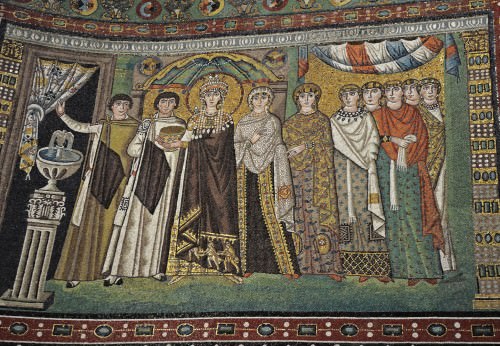
Empress Theodora & Her Court
Empress Theodora (r. 527-548 CE), the wife of Justinian I, is perhaps the most famous of all the Byzantine empresses today.Overcoming the stigma of her early career as an actress in the Hippodrome of Constantinople, she would become an invaluable support for her husband, famously convincing him to face and put down the dangerous Nika Revolt of 532 CE. She is also the subject of one of the most celebrated Byzantine artworks, the mosaics of the San Vitale church in Ravenna, Italy.One glittering panel shows Theodora resplendent with a large halo and wearing a great deal of jewellery and a Tyrian purplerobe. It is an iconic image of Byzantine womanhood that has coloured how empresses and aristocratic women of the period are viewed ever since it was made.
IRENE RULED AS EMPEROR IN HER OWN RIGHT, THE FIRST WOMAN TO DO SO IN BYZANTINE HISTORY.
Irene was the only female Byzantine ruler to assume the male title of basileus or “emperor” (as opposed to empress). The wife of Leo IV (r. 775-780 CE), when he died Irene assumed the role of regent for her son Constantine VI from 780 to 790 CE.From 797 to 802 CE she ruled as emperor in her own right, the first woman to do so in Byzantine history. Her troubled reign, scheming plots to keep her throne and the infamous blinding of her son, have led to her gaining the darkest of reputations - and this is not helped by such conceits as Irene being the only Byzantine ruler to ever put her face on both sides of her goldcoins.
Another famous Byzantine woman was Zoe, the daughter of Constantine VIII (r. 1025-1028 CE). She had no sons, and so she became empress in 1028 CE, ruling until 1050 CE with also a brief spell as co-ruler with her sister Theodora in 1042 CE. Zoe had a hand in the succession of five different emperors, three of whom were her husband: Romanos III (r. 1028-1034 CE), Michael IV (r. 1034-1041 CE) and Constantine IX (r. 1042-1055 CE). Accused of murdering her first husband, she was banished to a monastery before returning once more to the throne in 1041 CE after her second husband's death. She is the subject of a colourful biography by the 11th century CE Byzantine historian Michael Psellos.
Finally, in this brief summary of only a few of the notable Byzantine women, there is Kassia the poet. Living in the 9th century CE, she was not selected in a bride show for the emperor Theophilos (r. 829-842 CE) despite her great beauty and retired thereafter to a monastery. There she wrote religious poems and the music to accompany them, several of which are still used in Orthodox church services today.
Battle of the Metaurus › Ancient History
Definition and Origins
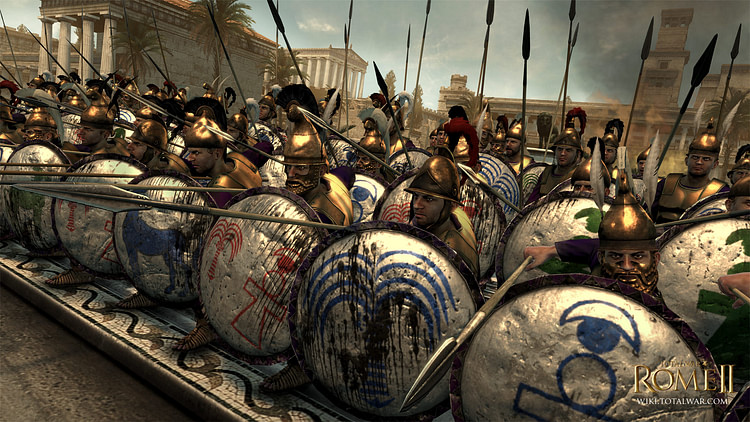
The Battle of the Metaurus (207 BCE) was a military engagement fought between the forces of Rome under Gaius ClaudiusNero (c. 237 - c. 199 BCE), Marcus Livius Salinator (254-204 BCE), and L. Porcius Licinius and the Carthaginians under Hasdrubal Barca (c. 244-207 BCE). Nero's forces defeated Barca who was killed in the battle. The two armies met after Hasdrubal had crossed the Alps into Italy to join his forces with those of his brother Hannibal (247-183 BCE) for a united attack on the city of Rome in hopes of ending the Second Punic War (218-202 BCE) between Rome and Carthage. Had he succeeded, Rome might have fallen to the Carthaginians and the war would have ended quite differently but this, of course, is speculation.
Roman writers and historians since the time have suggested that Hasdrubal probably would have successfully reached Hannibal – avoiding the conflict at the Metaurus River – if he had not delayed in his march to try to reduce the Roman colony of Placentia. Hasdrubal's whole purpose in coming to Italy was to reinforce his brother for a united push against Rome, not to conquer Roman positions on his own, but he may have felt he could not leave a fortified Roman colony to the rear of his army and tried to take it through siege.
The siege failed and the delay allowed for a Roman force led by L. Porcius Licinius and Marcus Livius Salinator to check him near the Metaurus. Nero, acting swiftly on intelligence reports, joined these generals and convinced them to attack Hasdrubal at once, resulting in a Roman victory and preventing Hannibal from receiving the reinforcements he needed to attack Rome.
Without Hasdrubal's army, Hannibal was forced to continue attempts to win the cities of Italy to his cause and defeat the Romans in the field. His Italian campaigns ended when he was recalled to Africa to defend Carthage against an advance by the Roman general Scipio Africanus (236-183 BCE) who defeated him at the Battle of Zama in 202 BCE, winning the war for Rome.
THE SECOND PUNIC WAR
The Second Punic War was a direct result of the First Punic War (264-241 BCE) which was also won by Rome. After the First Punic War, Rome imposed heavy fines in the form of tribute on Carthage, which the city struggled to pay. They drew on their colonies in Spain for resources and sent their premier general, Hamilcar Barca (275-228 BCE) to the region in 237 BCE to keep the peace among the tribes there and also make sure that Rome made no incursions into Carthaginian territory. Hamilcar took his son Hannibal along with him as well as his son-in-law Hasdrubal the Fair (c. 270-221 BCE). When Hamilcar was killed at the Battle of Helice in 228 BCE, fighting against native tribes, Hasdrubal the Fair took command of the Carthaginian forces.
HANNIBAL HAD NO INTEREST IN NEGOTIATING ANYTHING WITH THE ROMANS & EVEN LESS IN CONTINUING TO PAY THE HUMILIATING TRIBUTE.
Hasdrubal the Fair was more inclined to negotiations than battle and was able to maintain cordial relations with Rome. He set the boundary in Spain between Roman and Carthaginian territories at the Ebro River and this was agreed to by the Romans.Hasdrubal the Fair was assassinated in 221 BCE and the soldiers unanimously voted for Hannibal to take command. Hannibal was literally a sworn enemy of Rome, having been so sworn by his father who had fought the Romans in the First Punic War.Hannibal had no interest in negotiating anything with the Romans and even less in continuing to pay the humiliating tribute which so heavily taxed Carthage.
When the Romans installed an anti- Carthaginian government in the Spanish city of Saguntum, Hannibal seized on it as an excuse for war. A Roman delegation came to him asking him to leave Saguntum alone but Hannibal, presenting himself as a liberator of the people, claimed that Rome could not be trusted to deal fairly with the city, dismissed the delegation with a refusal, and marched on Saguntum, taking it; this was the first action of the Second Punic War.
HANNIBAL IN ITALY & HASDRUBAL IN SPAIN
Hasdrubal Barca had been in Spain since at least 228 BCE as he is mentioned as being present with Hannibal at the death of their father at Helice. Once Saguntum was taken, Hannibal informed his commanders – Hasdrubal among them – that the only way to win the war was to take the fight to the enemy and he was going to do just that. In April 218 BCE he crossed the Alps with his army into Italy and began a campaign of conquest and conciliation. He left Hasdrubal in charge of his armies in Spain. Scholar Rose Mary Sheldon comments:
Most of Italy at this time was not yet Roman territory but a conglomeration of independent, autonomous states joined under Roman primacy. Hannibal, devising his own brand of psychological warfare, strove to drive a wedge between Rome and the other indigenous communities of Italy. From his first appearance on Italian soil, he announced that he had come not to fight against the peoples of the peninsula, but to liberate them from Roman domination. After every battle he released without ransom any non-Romans who had been taken prisoner, so that they would spread the word in their native regions about Hannibal's political goals and his generosity. (48)
His strategy was immensely successful. He won the Battle of Ticinus in November and the Battle of Trebia in December 218 BCE and won more people to his cause. In 217 BCE he was again victorious in every engagement, most notably the Battle of Lake Trasimene in June. By 216 BCE he was able to threaten Rome itself and, in August, won his most famous victory at Cannae.
While Hannibal was marching through Italy, Hasdrubal was holding against the Roman forces in Spain. Shortly after Hannibal left for Italy, Hasdrubal created a defense system of watchtowers and walls which alerted him to the approach of any Roman navy landing an invasion force. In the fall of 218 BCE, however, Gnaeus Cornelius Scipio (265-211 BCE) was able to establish himself in Spain and soon after defeated the Carthaginian commander Hanno at the Battle of Cissa. This victory allowed the Romans a significant base from which to launch further campaigns in the region.
Hasdrubal arrived too late at the battle to help Hanno and so concentrated his attention on the Roman ships, destroying almost half of them before retreating. In 217 BCE he engaged the Romans in a naval battle on the Ebro River which seemed promising owing to his larger fleet and the past success of Carthaginian naval tactics. However, the Romans had allies from Marseille, who knew the strategies Carthage had used in the past and turned their tactics against them. Hasdrubal lost most of his fleet and retreated without offering further battle on land.

Campaigns of the Second Punic War
Scipio's brother, Publius Cornelius Scipio (died 211 BCE) then joined him in Spain with reinforcements and presented a much more serious threat to Hasdrubal. They took Saguntum and released the hostages the Carthaginians had taken from local tribes to ensure their compliance. This action won the Romans larger support and a number of tribes rebelled against Carthaginian domination. Hasdrubal needed to spend most of 216 BCE putting down revolts, which gave the Scipio brothers more time to prepare.
In 215 BCE, the Carthaginian senate sent word that Hasdrubal should join his brother in Italy. Hasdrubal began the march but, at the Battle of Dertosa, was met and defeated by the Scipios. Hasdrubal retreated and Roman power in Spain was increased.Following this defeat, the Carthaginian senate sent Mago Barca (243-203 BCE) and Hasdrubal Gisco (died 202 BCE) to Spain with reinforcements.
Hasdrubal Barca, Hasdrubal Gisco, and Mago kept the Scipios busy but could not beat them; every engagement was a Roman victory. In 213 BCE Hasdrubal was withdrawn from Spain to put down an offensive by the Numidian king Syphax (an ally of Rome) in Africa – an uprising allegedly engineered by the Scipios to draw Hasdrubal away; if so, they never took advantage of his absence.
Hasdrubal returned to Spain in 211 BCE with fresh reinforcements and supplies and met the Romans in battle, dividing his army between his own command and that of Mago and Gisco. The Scipios, perhaps unaware of how large an army was assembled, divided their forces; Publius directed his army toward the lines of Mago and Hasdrubal Gisco while Gnaeus went to meet those of Hasdrubal Barca in another area. Hasdrubal bribed the Celtiberian mercenaries of Gnaeus' army to abandon the Romans and go home; this they promptly did, reducing Gnaeus' forces even further. The Scipios were defeated and killed in the ensuing Battle of the Upper Baetis and the Roman army was scattered. It was a major victory for Carthage and a shattering defeat for Rome.
NERO & SCIPIO AFRICANUS
This win for Carthage, however, would bring two Roman leaders to the forefront whose brilliance and decisiveness would be the doom of Carthage: Gaius Claudius Nero and Scipio Africanus. Both men had already faced Hannibal in Italy – Scipio had survived the Battle of Cannae – and knew his tactics and also, possibly, those of his brother. When the Scipio brothers were killed, no Roman leader wanted to take their place in Spain but Scipio volunteered. Nero was transferred from Italy.

Scipio Africanus the Elder
Scipio began his war in Spain with the brilliant capture of New Carthage while Nero did not fare as well. Nero had Hasdrubal pinned down at Black Stones Pass but the Carthaginian general asked for negotiations over several days to work out the details of surrender and safe passage for his army. Every night, after the meetings, he would send more and more of his men secretly out of camp and to safety; finally, on a particularly foggy morning, he packed up the entire camp and slipped away.Nero was then recalled to Italy and Scipio conducted operations in Spain.
Events did not go well for Hasdrubal once Scipio was in charge. The Carthaginians finally made a stand at Baecula in 208 BCE in a well-fortified position above a river which would require Scipio to charge uphill against a heavily-defended position.Scipio sent only a light contingent in the center against the Carthaginian lines and, when the enemy moved against them, drove his heavy infantry up two gulleys on either side of the opposing lines, crushing the flanks and winning the day. Hasdrubal escaped from the battle and led what was left of his army toward the Alps to join his brother in Italy.
THE BATTLE OF THE METAURUS
Once across the mountains, Hasdrubal began his march south to join Hannibal but stopped to attempt the taking of the colony of Placentia. Scholar Ernle Bradford comments:
Crossing the Po and mastering the Stradella pass, he parched against Placentia. Here he faltered and lost time, laying siege to this faithful Roman colony which had closed its gates against him, having taken note of the fact that, like Hannibal, he had no equipment to conduct a siege. Hasdrubal has been blamed by some historians for delaying at Placentia, instead of bypassing it and marching on to rendezvous with his brother before the Romans could collect all their forces together. He was faced, however, with the fact that Placencia seemed a very strong garrison to leave in his rear and – even more important perhaps – the local Gallic tribes were slow to rise in his favor. He needed to wait until sufficient Ligurians had reached him and as many Gauls as possible had been recruited. (171)
His siege of Placentia was a failure for the very reason the citizens counted on: he had no siege engines, no catapults, nothing by which he could reduce a city. He marched on from Placentia and headed south while, at the same time, Hannibal was being harried by Hasdrubal's old enemy Claudius Nero. Nero had been sent against Hannibal soon after his redeployment to Italy and was now playing a kind of cat-and-mouse maneuver with him near Bruttium.
Hasdrubal's march led him into the path of the armies of Marcus Livius Salinator and L. Porcius Licinius near the Metaurus River. The two armies were fairly evenly matched, however, and held off from engaging. Shortly before this meeting, Hannibal had sent messengers north to locate Hasdrubal and urge haste in reaching him. The messages were received and Hasdrubal wrote back telling Hannibal where he was and also the size of his army. He sent the messages by six horsemen who were captured by Roman sentries near Tarentum. Since the letters were not written in any kind of code, they were easily translated from the native Punic and this intelligence was sent quickly to Nero's camp.

Hannibal Barca
Nero acted swiftly without waiting for senatorial approval from Rome. Screening his movements at night, he slipped away from Hannibal with 6,000 legionaries and 1,000 cavalry and quick-marched them to the camp of Porcius and Salinator. Since the Roman camp was located only about a half mile away from the Carthaginians, Nero had his men billeted with those already there so no new tents would betray his presence.
The next morning, Hasdrubal was mobilizing his forces for battle when he noticed leaner horses in the enemy camp and strange shields on display. He sent scouts to reconnoiter, and they returned to report that nothing was any different than it had been but they had observed that one trumpet sounded the morning orders in the praetor's camp – as usual – but two had sounded in the consul ’s camp, indicating the presence of a second consul and so, certainly, his army. Hasdrubal understood he was now facing a much larger force and ordered his men to stand down from the attack.
That night, he retreated from his position toward the Metaurus River, most likely planning to cross it the next morning. Exactly what he intended to do after that is unknown because it is thought that he was demoralized by the possibility that his brother had been killed in battle. Whoever the unknown consul was who had joined with the others opposing him, he certainly would have been previously occupied by Hannibal. The consul would not have disengaged with Hannibal to come after him unless Hannibal was dead. Hasdrubal may have thought he was now alone against overwhelming forces in a foreign land.
His army, moving toward the Metaurus, got lost in the darkness and morning found them strung out along the river in disorder.Nero, back in the Roman camp, saw the opportunity and – against the counsel of the other two – pressed for an immediate attack. The Romans marched toward battle as Hasdrubal drew up his forces as best he could and the two met in battle.Hasdrubal placed his Gauls on a small hill on his left, his Spaniards and Ligurians in his center where he also placed ten elephants, and his cavalry was on the right wing. The Romans deployed with Salinator in the center, Porcius on the left, and Nero on the right facing the Gauls on their hill which was protected by uneven terrain.
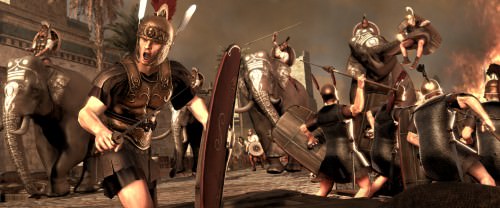
Carthaginian War Elephants
Hasdrubal's elephants caused more harm than good because the Romans understood, after encounters with Hannibal, that elephants could be turned into a liability for the opponent when wounded; the Romans attacked them with spears and they rounded on the Carthaginian troops. Salinator and Porcius pressed the center and the left but Nero could not manage to dislodge the Gauls from their hill.
Recognizing that the battle could be won by a concerted charge at the other end of the line, he pulled his troops from engagement with the Gauls and moved them swiftly behind the Roman lines to come down on the left – the right wing of the Carthaginians – breaking the line and driving Hasdrubal's troops into a rout which swiftly became a massacre. Hasdrubal's army tried to retreat across the Metaurus but they were either drowned or cut down by the Romans. Recognizing that he was defeated, and that his brother was most likely dead somewhere in the south, Hasdrubal drove his horse onward into the enemy lines swinging his sword and was killed.
Once the battle was over, Nero swiftly assembled his troops and marched them back south to again engage Hasdrubal's brother. Hannibal never knew he had left. The first Hannibal knew of his brother's defeat – or even whereabouts – was when a Roman cavalry contingent threw Hasdrubal's head into his camp near Bruttium.
CONCLUSION
The Battle of the Metaurus is a significant part of one of the great What-Ifs of history. Even though Hannibal and Hasdrubal had no siege engines nor any means of taking a city, it is likely that, had they concentrated their combined forces in an assault on Rome, the city would have surrendered and Carthage would have won the war. Hannibal was undefeated in Italy and Hasdrubal was known as the general who had defeated and killed two of the greatest Roman generals of their generation.Rome had already panicked when Hannibal had won at Cannae in 216 BCE and certainly would have been prone to do so again.
What if Hasdrubal had not lingered at Placentia? What if he had not sent the letters in Punic which alerted Nero of his location? Or what if he had simply given the messages to the riders verbally instead of in written form? What if he had charged the Roman camp instead of retreating when he sensed Nero's presence?
All such questions, however fascinating, are ultimately unanswerable. Hasdrubal's choices led him to the encounter at the Metaurus, and afterwards there were no longer any options for Hannibal except to fight a losing war against overwhelming odds which would end in his defeat. The Carthaginian senate refused him any more troops or supplies, and when Scipio Africanus proposed his plan to attack Carthage and draw Hannibal out of Italy, it worked as perfectly as he had planned.Hannibal was defeated at the Battle of Zama and, afterwards, more or less lived a life on the run from the agents of Rome until he took his own life at the age of 65 in a country far from his home.
LICENSE:
Article based on information obtained from these sources:with permission from the Website Ancient History Encyclopedia
Content is available under License Creative Commons: Attribution-NonCommercial-ShareAlike 3.0 Unported. CC-BY-NC-SA License